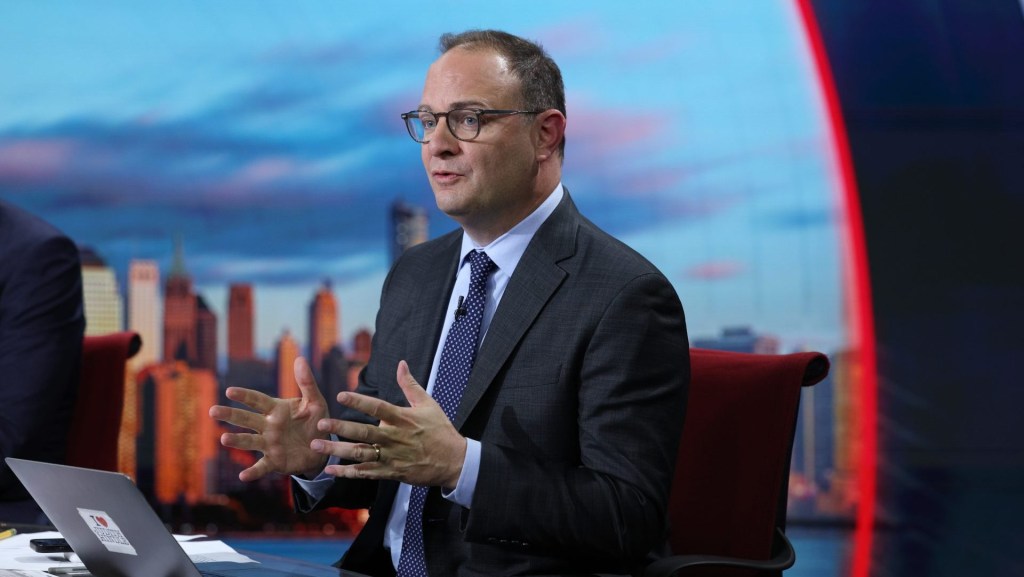A couple of weeks ago, ESPN landed one of the biggest “gets” of the year when it scored an exclusive interview with MLB Commissioner Rob Manfred about the Houston Astros sign-stealing scandal.
To maximize exposure, the network spread Karl Ravech’s one-on-one interview across many of its properties, from linear TV networks to the ESPN.com web site. But it did a curious thing on Feb. 16 – ESPN put the entire 45 minute-long Manfred interview on YouTube.
It would seem counterintuitive to publish an exclusive interview with the commissioner at the center of the most significant controversy in sports on a free platform, especially when ESPN is trying to grow its over-the-top service, ESPN+.
But there’s a method to ESPN’s strategy, according to Ryan Spoon, ESPN’s senior vice president of social and digital content.
ESPN aims to use content to strategically program natively for individual platforms, and the view times on YouTube are much longer than other channels and platforms, Spoon said.
Putting the full 45-minute Manfred interview on YouTube also made business sense, he said.
ESPN was able to monetize the Manfred interview by running it on the ad-supported YouTube platform.
The number of channels earning six figures per year on YouTube grew more than 40% year over year, according to Google. ESPN has a big, growing business on YouTube.
ESPN now boasts 10.7 million subscribers across 10 YouTube accounts. During 2019, those accounts generated 3.3 billion views and 12.1 billion minutes watched. Those numbers were up 70% and 92%, respectively, year over year.
“Actually, it has become a very meaningful business for us,” said Spoon about ESPN’s YouTube ad revenue.
He wouldn’t comment on annual ad dollars except to say, “It’s not an afterthought.”
ESPN is also trying to match content to user behavior, whether it’s on ESPN.com, the ESPN app, or social media like YouTube, Twitter, Instagram, or Snapchat.
Take ESPN.com, for example. Users of the company’s main website value “time and speed” above all, said Spoon. When it comes to the ESPN app, it’s more about personalization because everybody personalizes their app differently.
“We think about the version of it, and the presentation of it, that makes the most sense on each platform,” said Spoon.
On social media, ESPN generally relies on shorter, more viral content. Spoon calls it the “candy” from games. Twitter “is very much about live and now,” he said. The exception is YouTube, which generates longer engagement times.
View times for ESPN videos on YouTube can last several minutes. Spoon wouldn’t specify how much except to say that it’s sometimes greater by multiples. That made it the right spot for the full Manfred interview.
YouTube “is a very different dynamic than each of the others in that the view times are much longer, and the user expectation is much longer in terms of what he or she has the desire to consume,” he said.
Mason Bates, director of sponsorships and partnerships at Mindshare, said YouTube enables ESPN to feed fans for more long-form content on mobile while funneling them back to the company’s properties.
“ESPN knows there are passionate people out there that want to see content like a 45-minute interview, but they’re smart enough to know that people may not want to sign up for a subscription with ESPN+,” Bates said. “YouTube provides a great solution for ESPN, as they can ensure delivery on longer content to fans that want it and can monetize those views with advertisements.”
READ MORE: Dallas Cowboys Are Still America’s Team When It Comes To TV Ratings
Steve Bradbury, president of Deep Sports and an adjunct professor at Syracuse University, also thought the Manfred decision was a smart move strategically.
ESPN knew there was a high level of fan interest in Ravech’s Commissioner interview. That was born out by the video generating nearly 115,000 views and over 1,150 comments to date.
The footage was going to be shared anyway, added Bradbury, whether legally or illegally. So ESPN might as well get the credit. It also allows the rest of the media to cherry-pick Manfred quotes at their leisure while citing ESPN.
“It’s disposable content. That is, the shelf life will be relatively short, so the more people that see it sooner than later, the better,” Bradbury said. “Think of it as a loss leader in a supermarket. Tuna fish goes on sale, which drives people to the store. While there, they buy other items that more than make up the margins lost on the discounted item.”
READ MORE: After Viral Astros and Yankees videos, ‘Jomboy’ Looks To Build Media Brand
Spoon said viewers should look for ESPN to continue to put longer content on YouTube and the shorter content on social media like Twitter and Instagram.
“You won’t see 30-second clips from ESPN on YouTube. That’s incredibly intentional,” said Spoon. “You will see a lot of 30-second clips across our site. That’s also very intentional. You’ll see very short clips on Twitter and so forth. That’s also very intentional.”

















